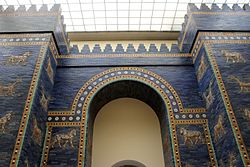The following is a timeline of the history of the city of Samarra, Iraq.
Contents
This is a dynamic list and may never be able to satisfy particular standards for completeness. You can help by editing the page to add missing items, with references to reliable sources.
Part of a series on the |
|---|
| History of Iraq |
 |